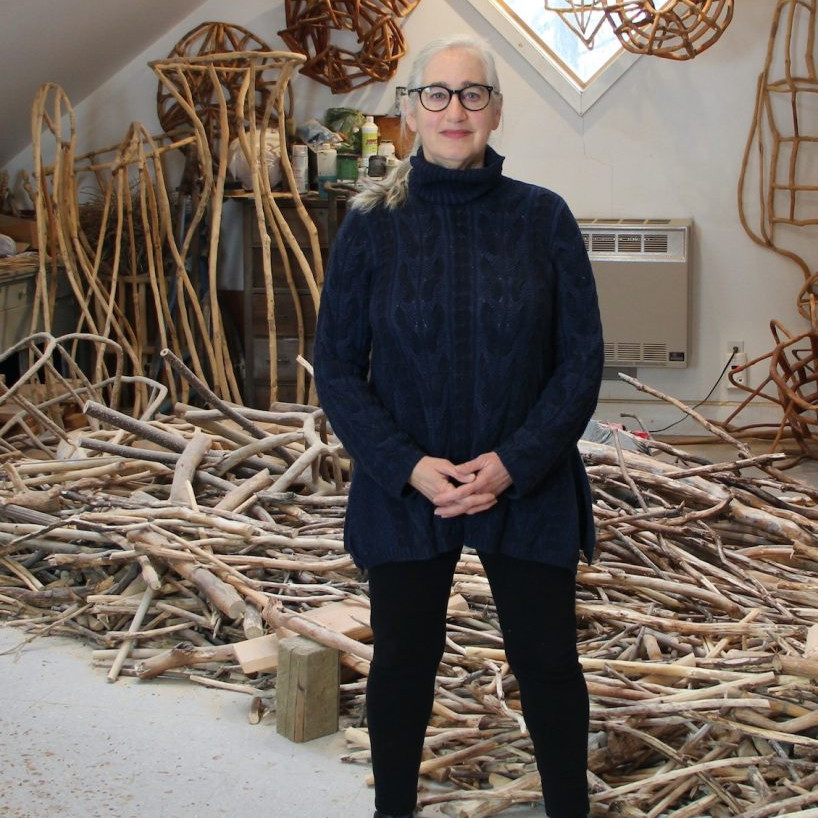Bob Quinn Sculptor
Having had a career in advertising what lead you to take up full time sculpture?
I always had an interest in sculpture, and illustration was part of my job. I ran a graphic design business, but it got to the stage when I could never seem to get home in the evening at a reasonable hour. Eventually, my wife bravely insisted that I give it all and build a studio.
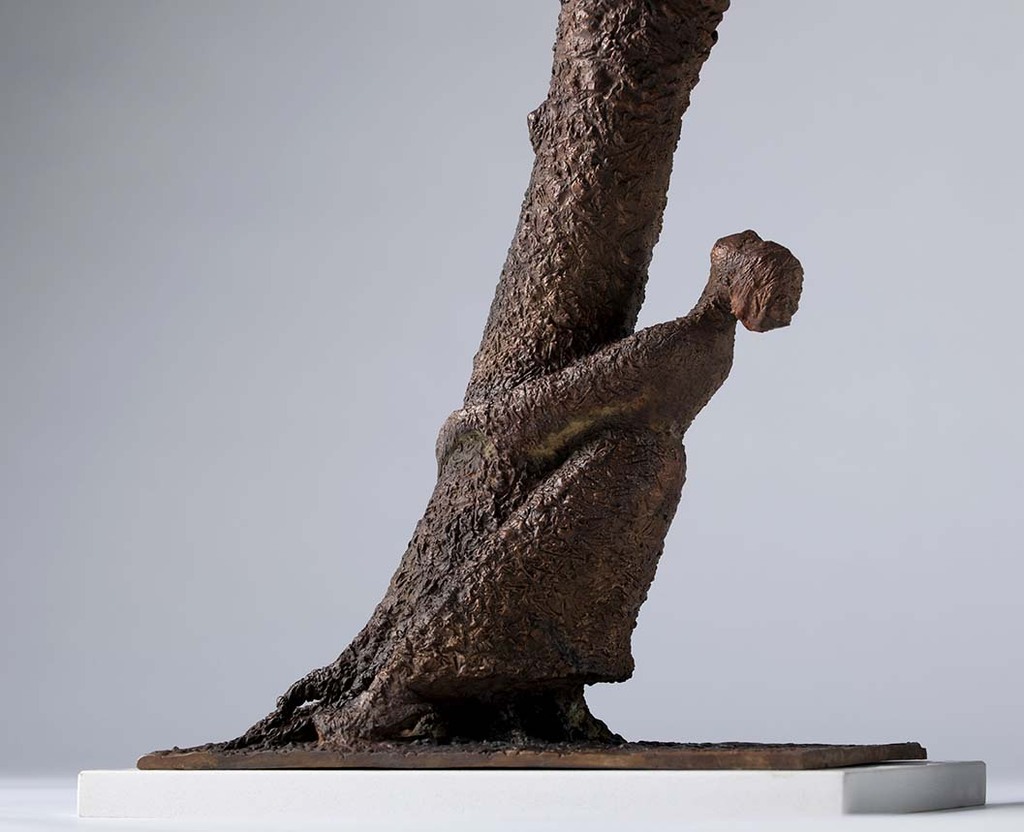
Clearing the Orchard, Detail, Bronze, 103x28x19cm, Edition of 9
How do you manage to add emotion to figurative sculpture?
I think it’s because I want my sculptures to tell a story and I try and take out from the figure any unnecessary or distracting detail, especially in the female form.
Can you expand on one sculpture, please use your initial drawings to the completed sculpture?
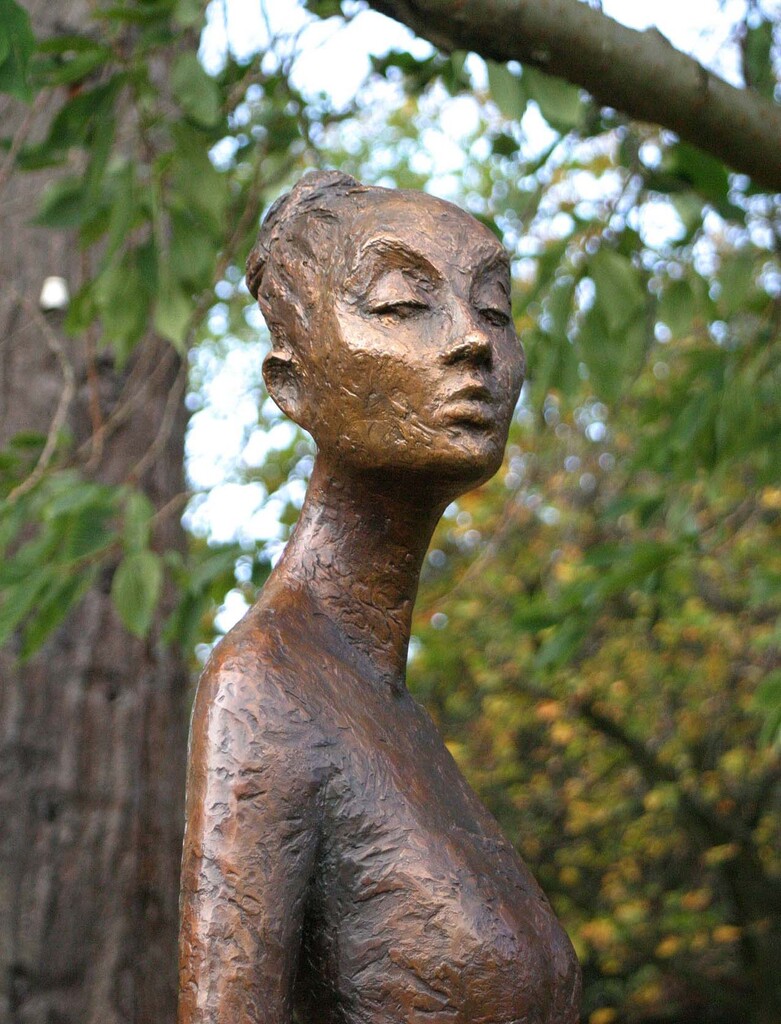
‘The Letter’, Detail, Bronze, 78x13x14cm, Edition of 9
I did “The Letter” in both life size and as a maquette.
It was part of the “Strong Women” One Man Show I did in Dublin. The figure is reduced down to its simplest form while also stretched as far as the eye will accept (I suppose I fall into the Expressionist category; I make what I feel not necessarily what I see).
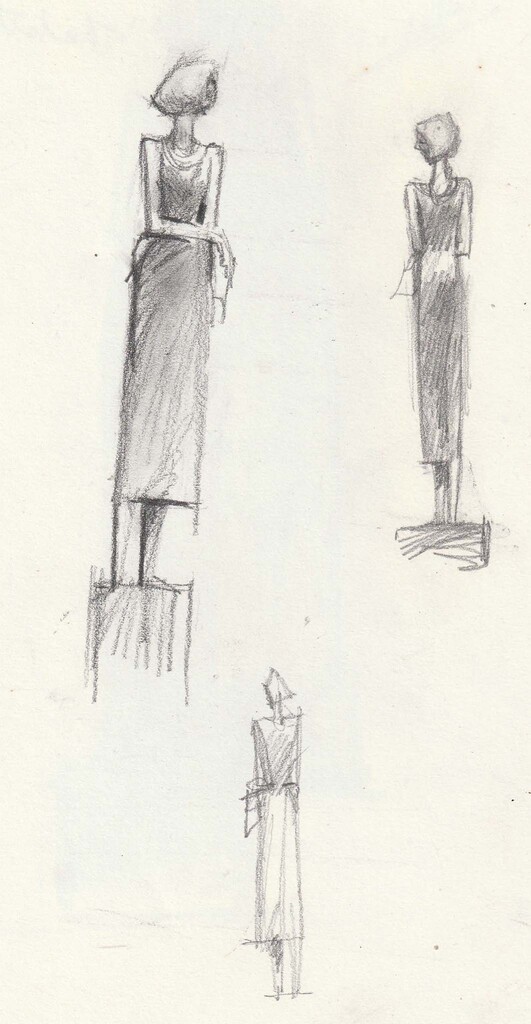
The message is simple, she holds a letter, you don’t know whether the content is good or bad, it’s the expression in her face that’s important, the determination, the stoicism in the way she deals with the contents of the letter. I did “The Letter” in both life size and as a maquette.
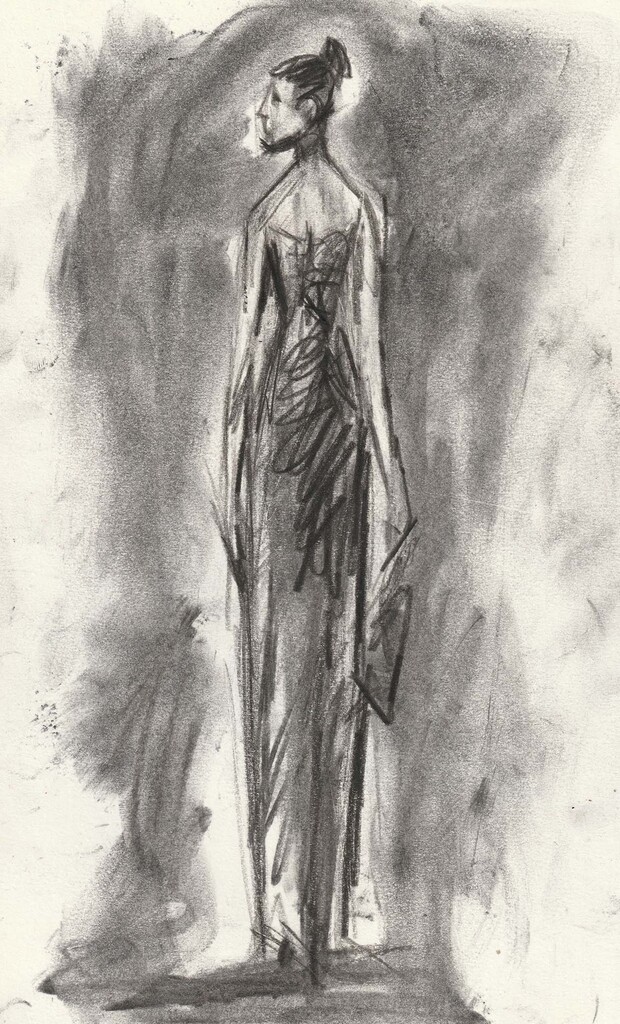 ‘The Letter’, Bronze, 78x13x14cm, Edition of 9
‘The Letter’, Bronze, 78x13x14cm, Edition of 9
What excites you about the human form?
Sculpture is 3D, the human form has endless poses and there are a thousand stories in these poses. Having said that, I once asked my 93 year old mother to pose for me. She, as an artist, insisted that she needed to strip down to her bra and pants. She is not here anymore to defend herself, but, I promise you, she redefined the way in which the human form could excite!
Take two works and explain the emotion in the …’nobility of the most ordinary of human activity.’
Firstly, I choose “Mantle.”
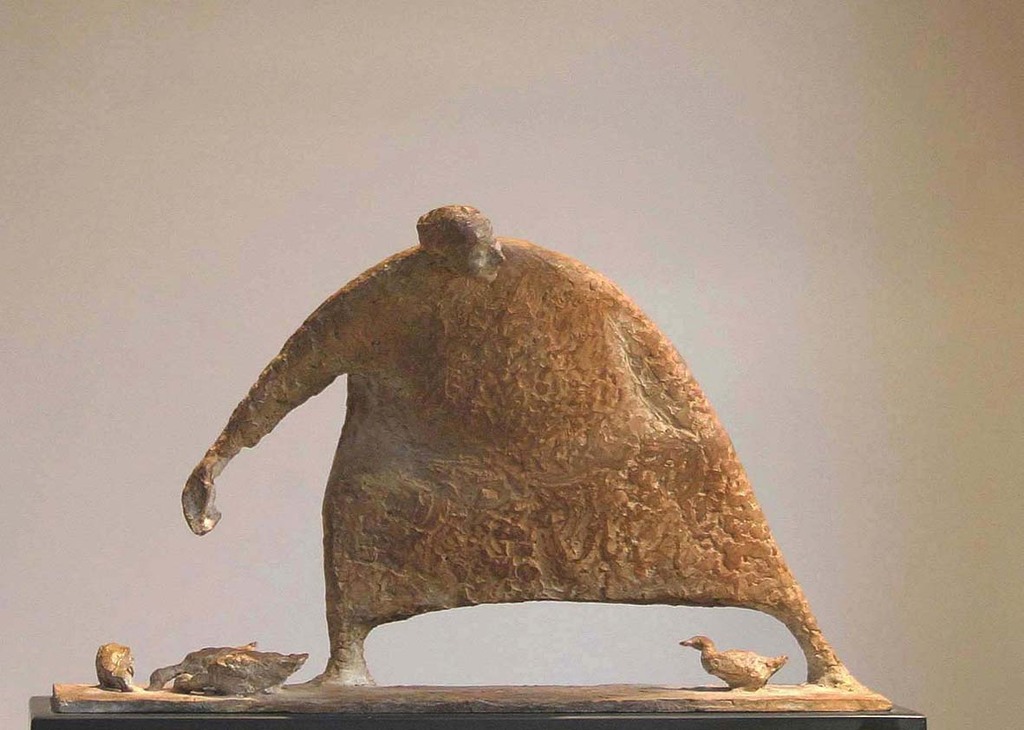
‘Mantle’ Bronze, 39x14x11cm, Edition 9
Here is a practical country woman routinely feeding her ducks. But we see how she is still mindful and caring in protecting one of the weaker ones that follows up behind.
Secondly, I choose “Working mother” (inspired by a 1960s photograph in the press) because it shows (I hope) a young busker on Grafton St in Dublin.
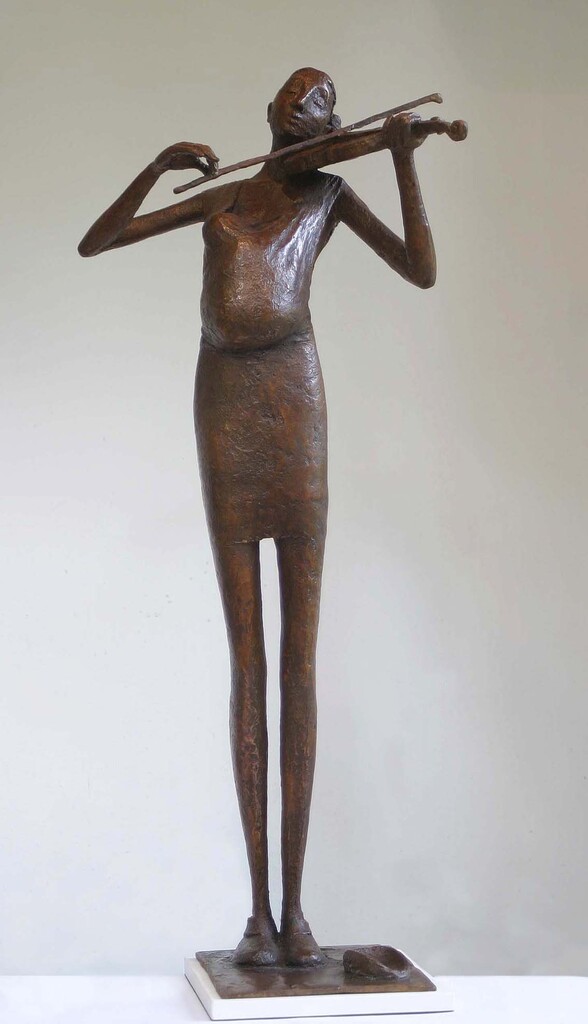
‘Working Mother’ Bronze 62x24x23cm, edition of 9
She protects and swaddles her newborn child while also earning a little money from her violin. She is on her own, probably a single mother.
Discuss your commission ‘Fishermen.’
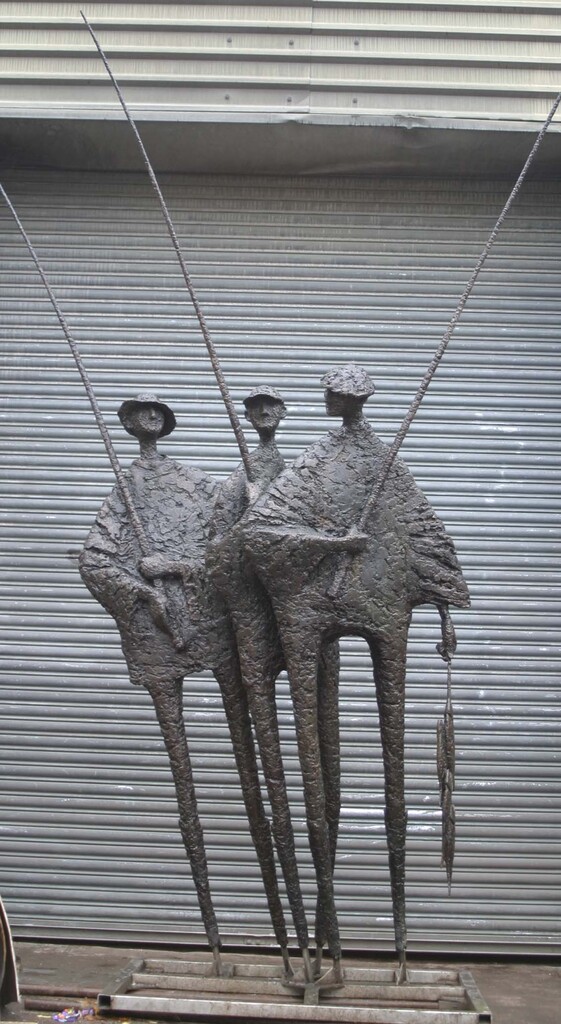
Fishermen, Bronze, Over Lifesize
How it came about?
It came from a commission. A successful business family wanted a sculpture for their holiday property, a beautiful old fishing lodge on the shores of Loch Mask, in the West of Ireland.
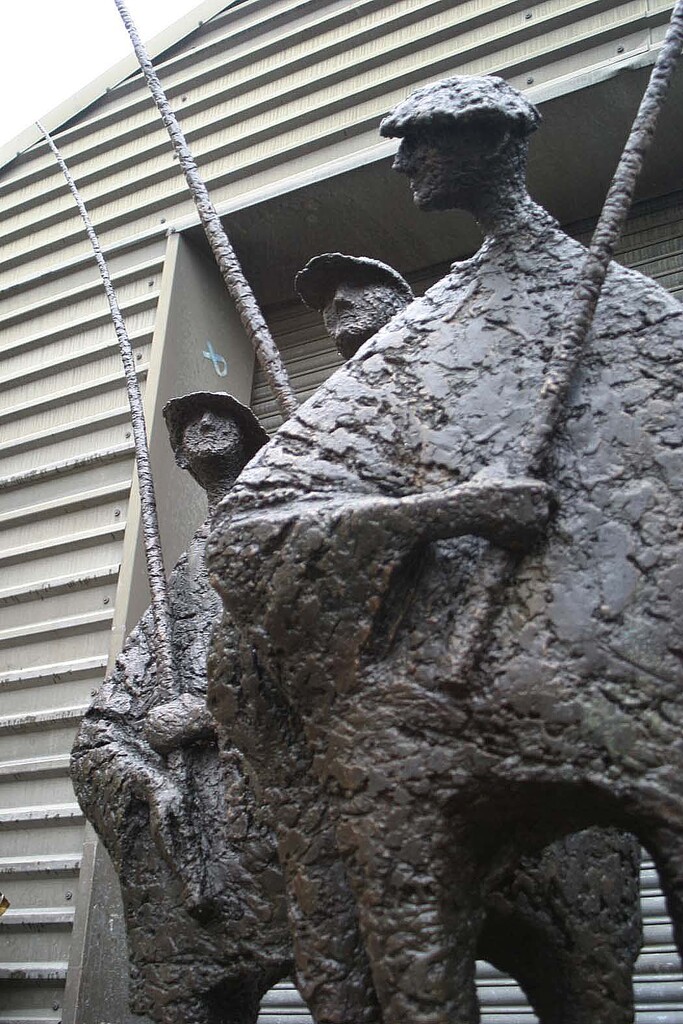
Fishermen, Detail, Bronze, Over Lifesize
How much input, did the client have?
The client allowed me a free hand but I was conscious of the work ethic of the clients and wanted to reflect that in the sculpture.
The final positioning of the work?
After a hard day on the lake, we see the sculpture of the three fishermen from the house coming over the hill to well-deserved relaxation.
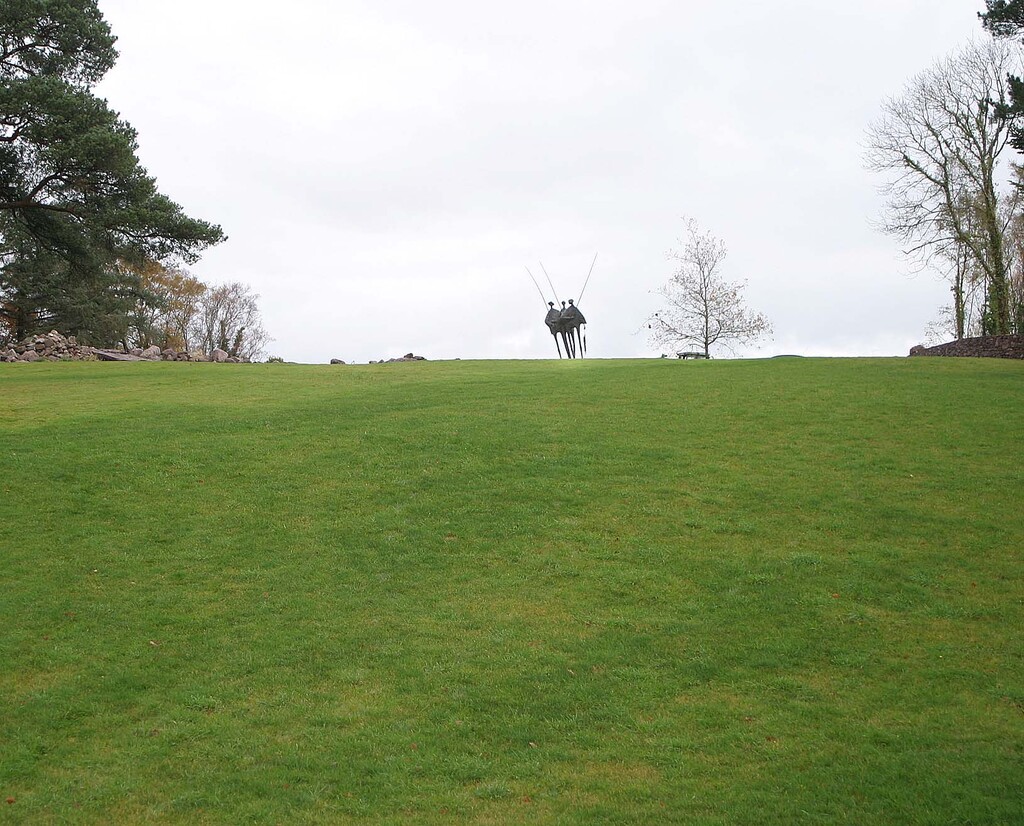
Fishermen, Bronze, Over Lifesize
I suppose they act as a metaphor for the clients coming down to their holiday home perhaps after a busy period with the business.
Discuss how the ‘Wind’ is so often present in your work. (Is it wind or the person pushing forward’?
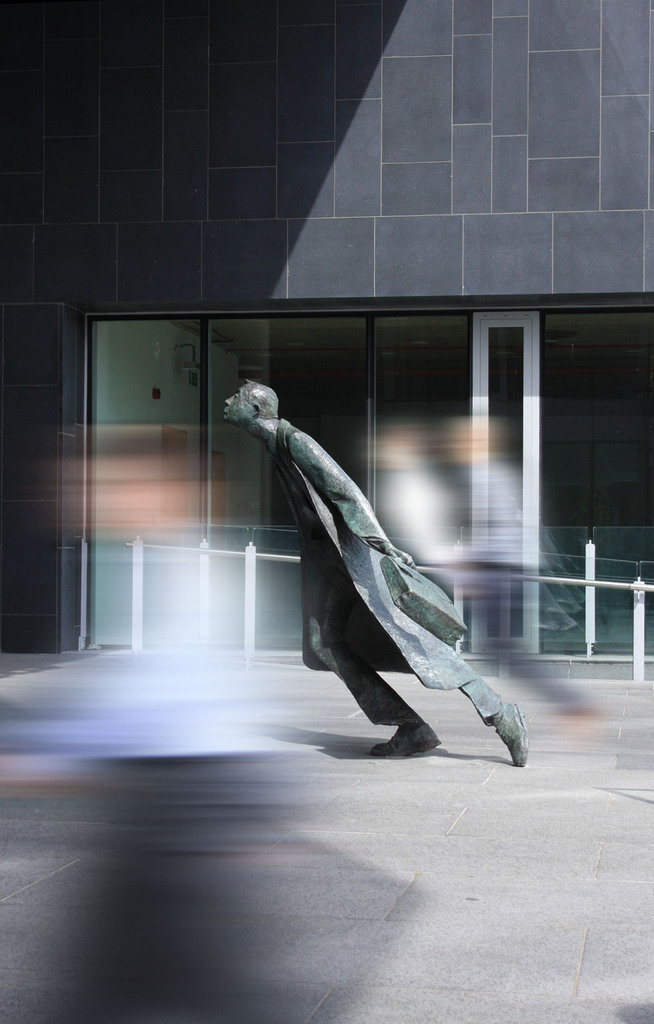
‘Moving Forward’ Bronze, Over Lifesize, Chase Building, Dublin
I have not thought of that before, you have put me on a spot! I suppose it could be because wind creates movement, as does leaning forward. I also think that it is a good vehicle for creating an element of humour.
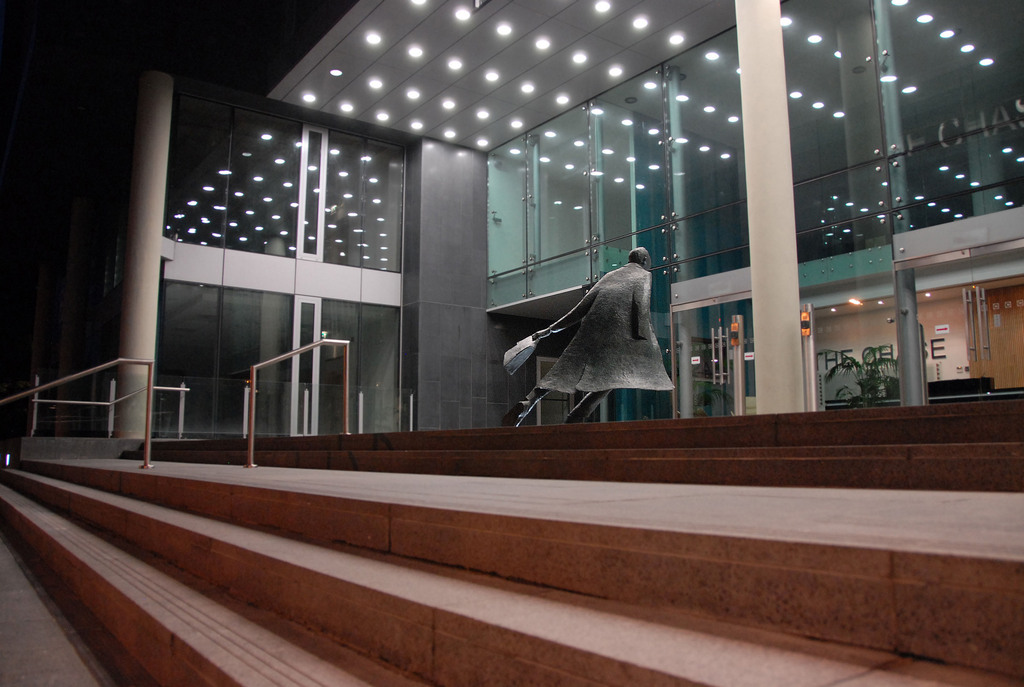
‘Moving Forward’ Bronze, Over Lifesize, Chase Building, Dublin
How influential were your wife and daughters in your series, ‘Strong Women’?
I have a wife and two daughters. Irish women in general, particularly country women, are strong. It is the colonial past, perhaps the famine. Irish women have had to be strong. At a practical level. My six-foot younger daughter was my muse for so many of the pieces.
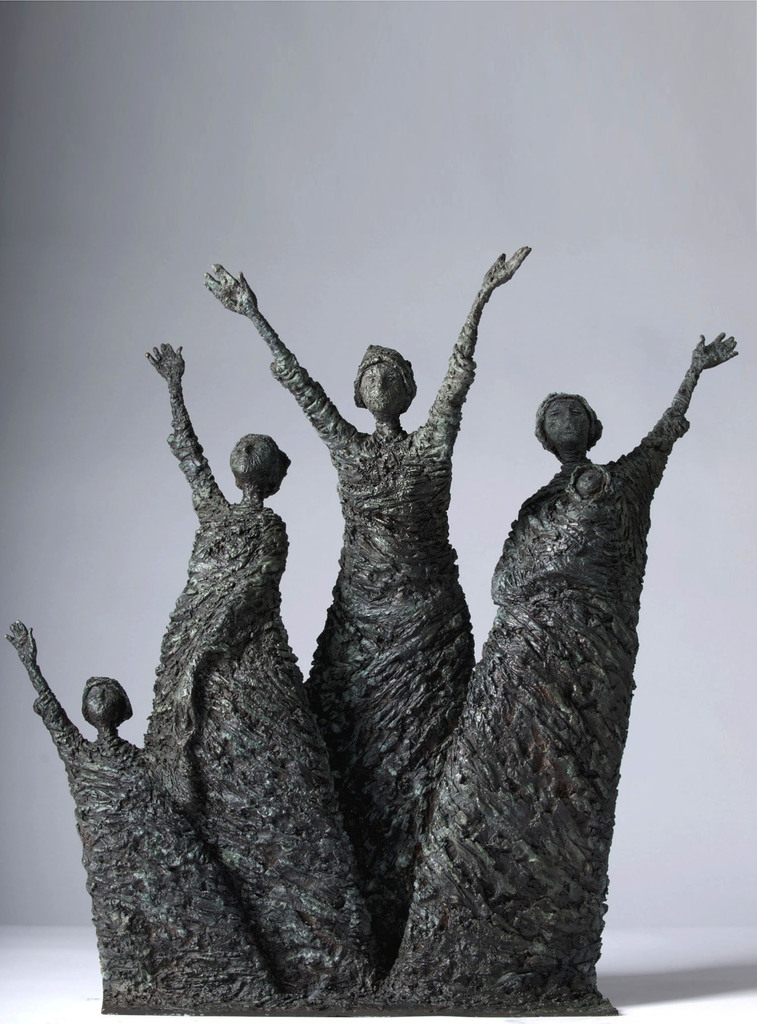 ‘Returning’, Bronze, 61x21x44cm, Editions of 5
‘Returning’, Bronze, 61x21x44cm, Editions of 5
Take ‘Best Night Ever’ comment on…
The decision to have 9 Editions.
Usually I do nine, plus one Artist Copy for maquettes (smaller pieces) and 4-5 plus one Artist Copy for larger outdoor pieces. Sculpture is a costly business any profit must be spread, over an edition.
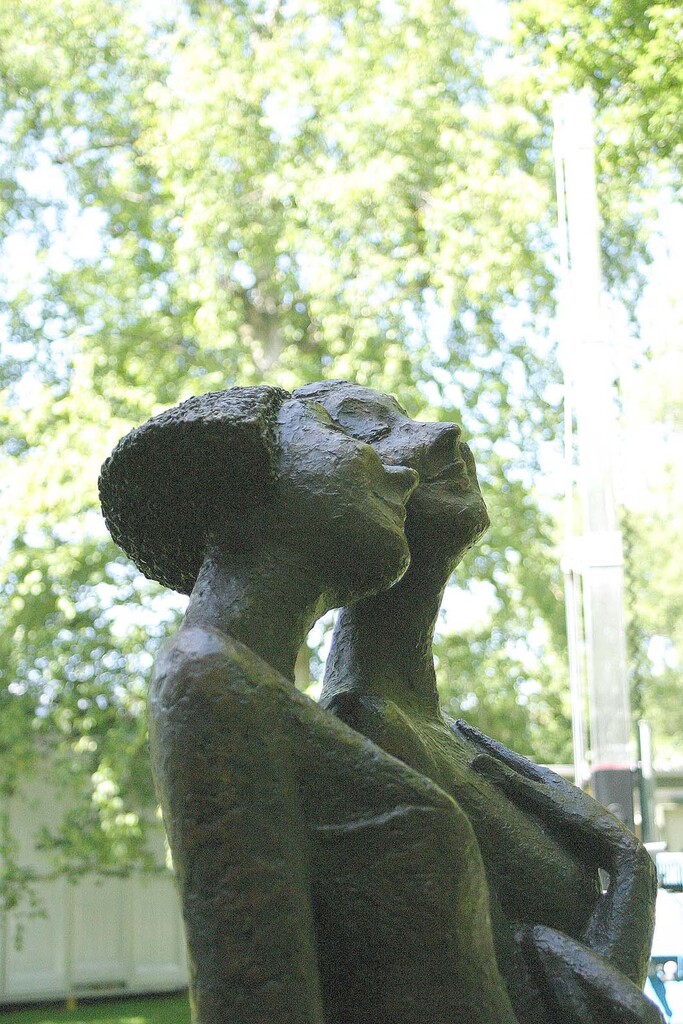
‘Best Night Ever’ detail, Bronze, Over Lifesize, edition of 3
The size of the work.
With larger more expensive outdoor work the edition is smaller. Clients that invest a lot are entitled to a degree of exclusivity. Certain pieces lend themselves to being large, and size can create drama.
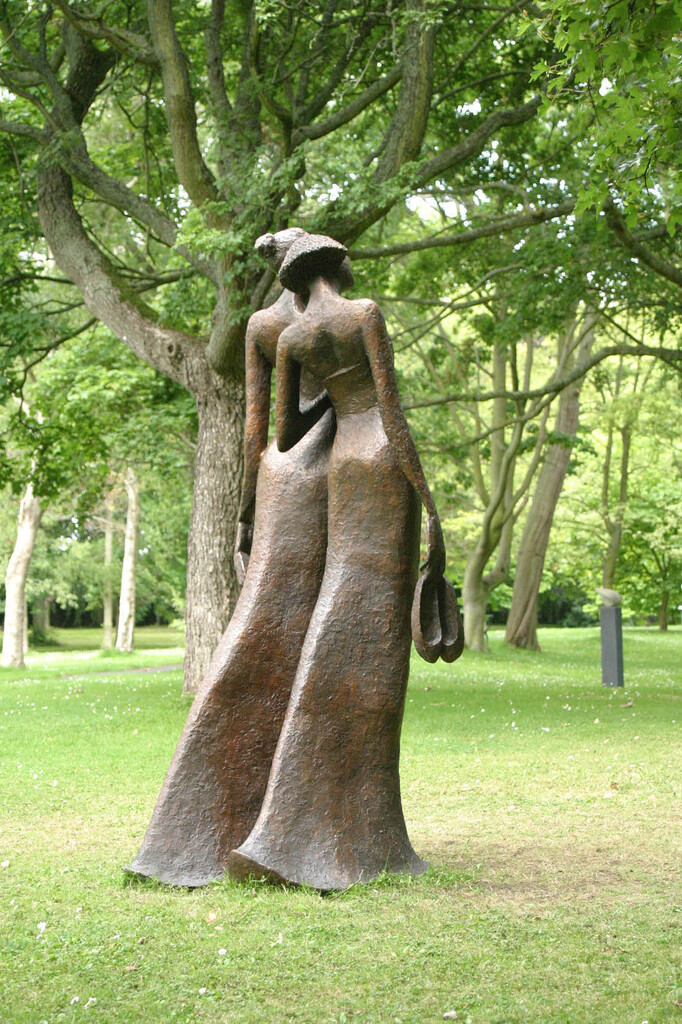
‘Best Night Ever’, Bronze, Over Lifesize, edition of 3
The importance of 360 degrees on the work.
With sculpture an idea might work in sketch form, in 2D, but that does not mean it will work in the round. It must work from every angle. With “Best Night Ever” I wanted them to be seen from a distance, that you are invited to join them, and to share whatever it is that is amusing them. They are two friends, dressed up and sharing a laugh. You know nothing of their lives, what tragedy, what illnesses what issues they might be facing. But for these few hours they are having… the best night ever.
Your work ‘Skating Home’ discuss the cragginess and texture of the work.
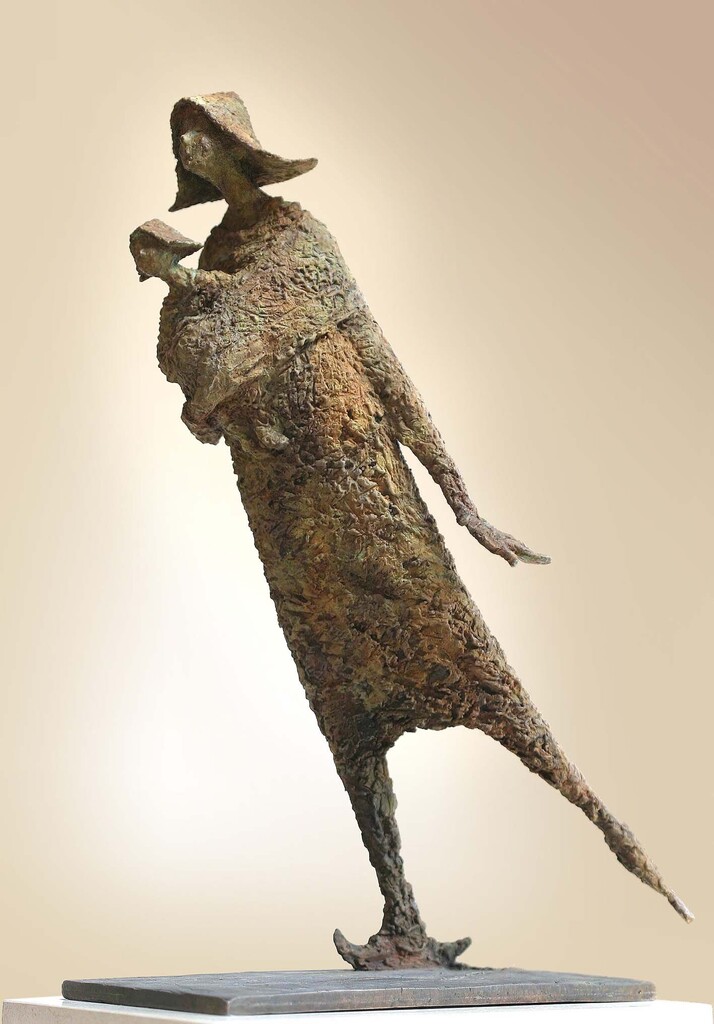
Skating Home, Bronze, 26×13.5x41cm, edition of 9
I understand why, but I still get frustrated when, beside a sculpture there might be the sign “Do not touch”. I suppose when I give a sculpture an overall texture it is to reduce what I see as the distracting detail beneath that texture and keep it simple. With “Skating Home” it’s about the shape created by the mother and child skating down the frozen canal, any detail is to show the period in which the sculpture is set or because that detail adds to the piece.
What is it that allows us to know it is historical?
The piece was inspired by a painting by the Dutch painter John Kind, of skaters on a canal back in the 1800s. I love the shape of the women’s headgear.
Discuss how and why you use different textures in your work.
I enjoy the way different textures respond to different patination, but I also use texture to minumise what I might see as detail that is a distraction to the overall message.
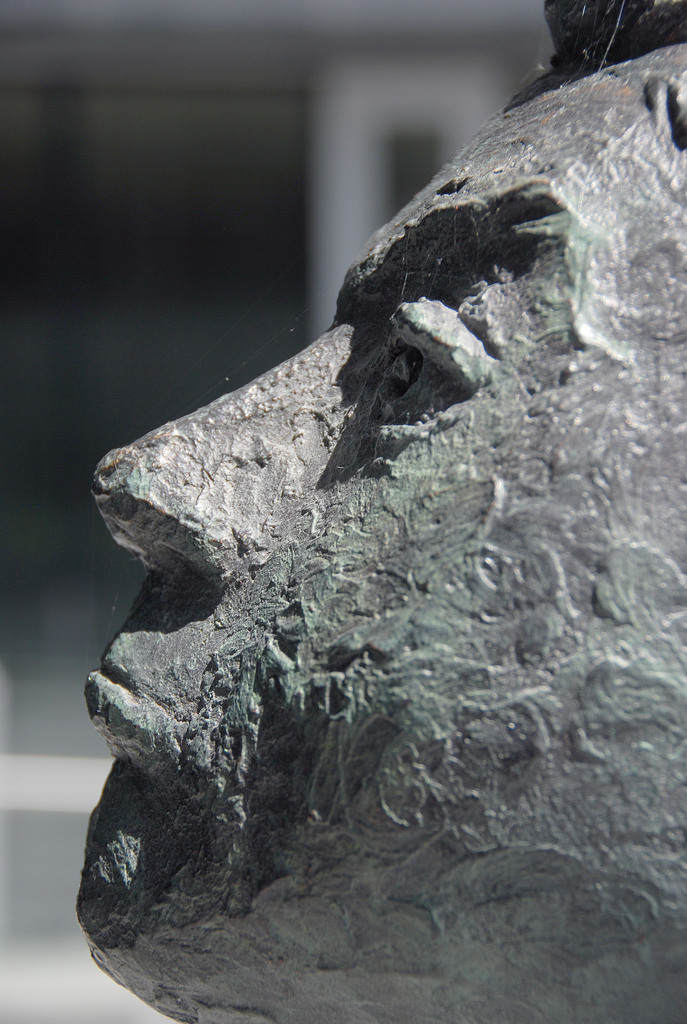
‘Moving forward,’ Detail.
Your work is emotional, comment on this using two works, ‘Crucifixion’ and ‘Clearing the Orchard’.
Both these pieces were in the Strong Women exhibition, one tragic the other humorous. “Crucifixion” depicts three mothers in mourning at the base of three empty crosses. You do not know which is Mary, it doesn’t matter they have all lost a son.
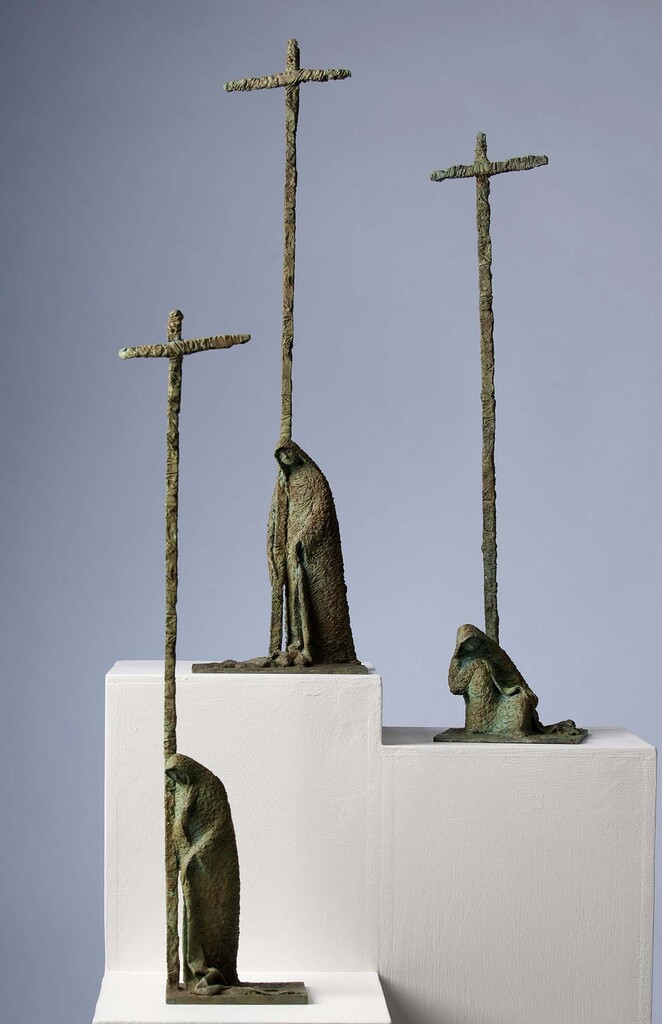
‘Crucifixion’ Bronze, 46.5x10cm, Edition of 9
In “Clearing the orchard” you see a strong woman, literally. She is dragging a tree from the ground, roots and all. You can guess the back story, she’s fed up of asking her lazy husband “forget it, I’ll do it myself”!
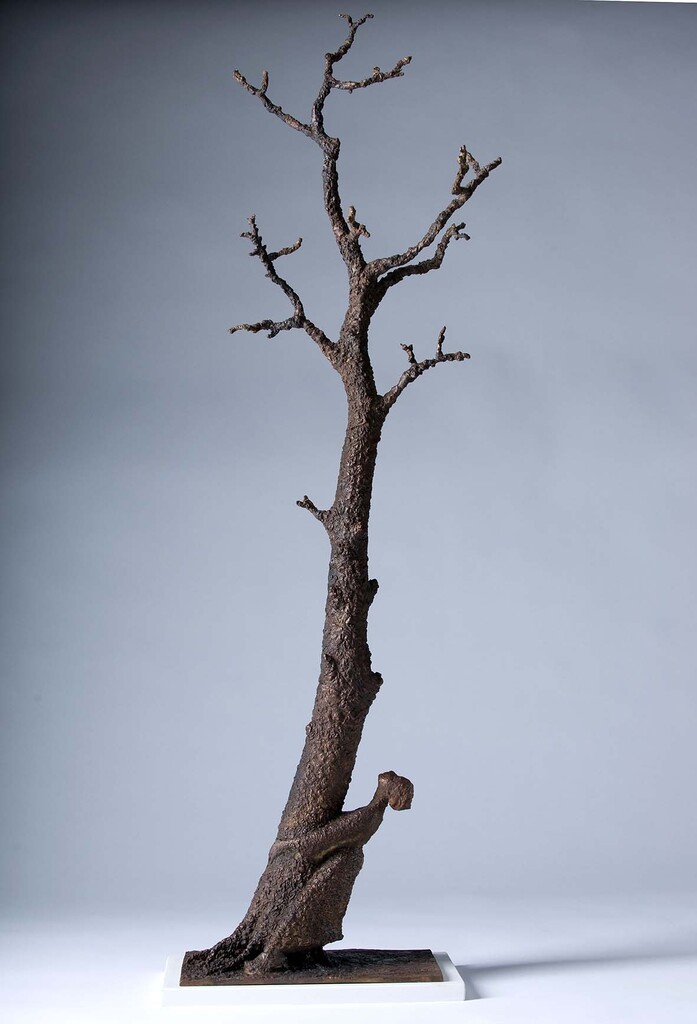
‘Clearing the orchard’ Bronze, 103x28x19cm, Edition of 9
How do you decide on the base / plinth you use in your outside work?
It must, be weatherproof, and it has to compliment the piece its supporting. I generally use stone.
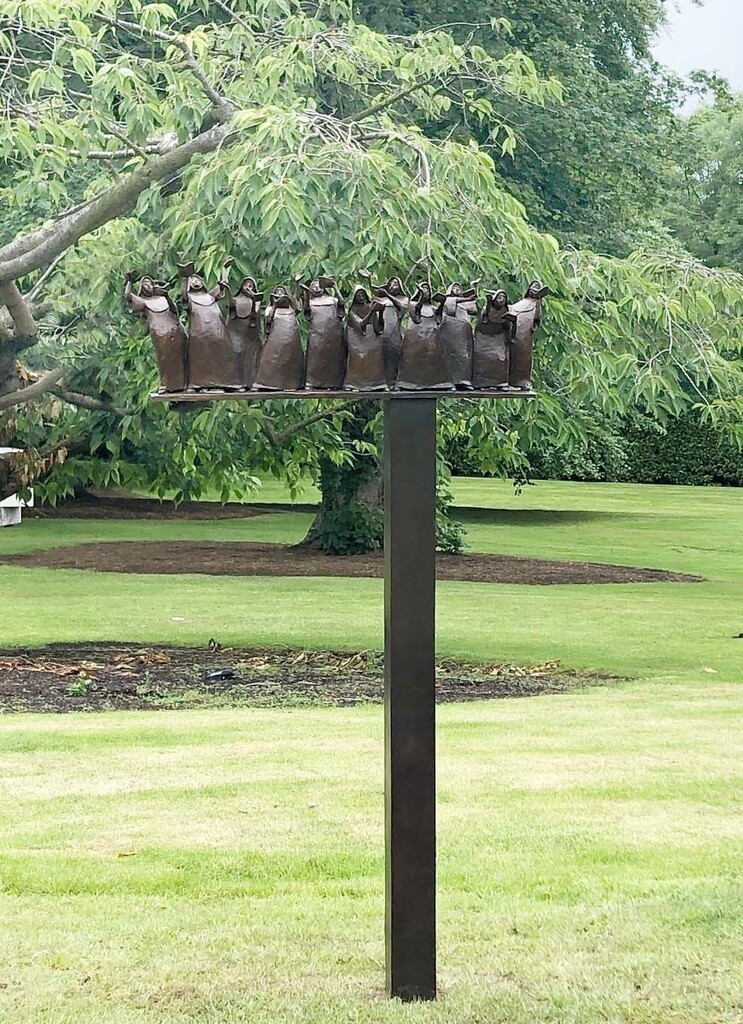
‘Office Party’ Bronze, 62x24x23cm, edition of 9
It is strong and it takes fixings well, but its heavy. I have used cream sandstone its lighter but its soft and you handle it with great care.
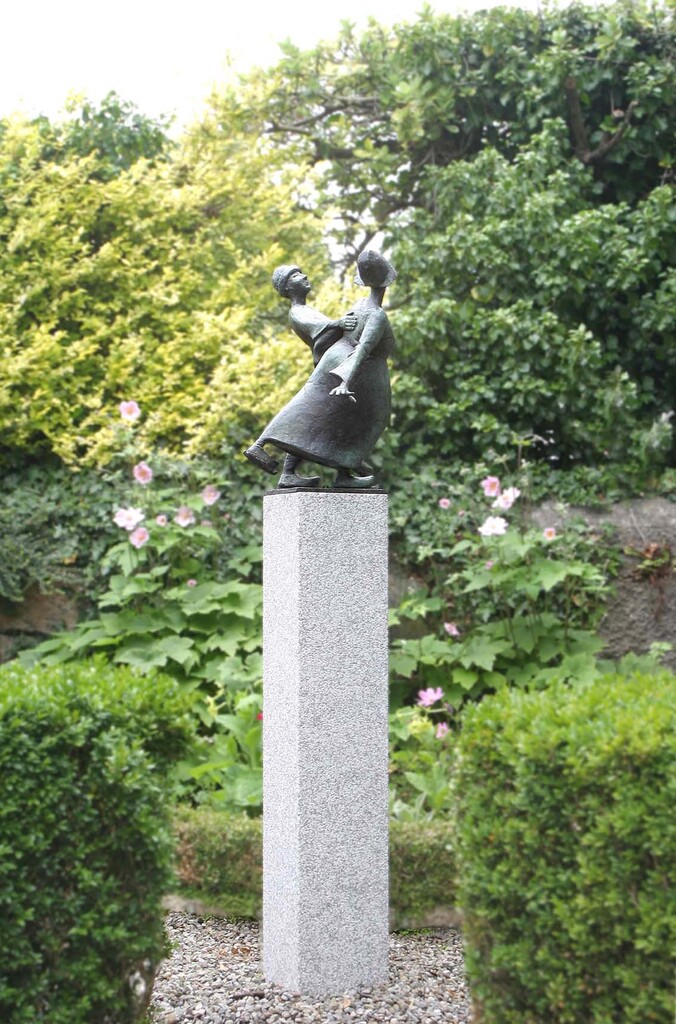
‘Off We Go, Bronze on Irish Granite, 55.5x58x42cm, (including base) Edition of 9
Occasionally a continuation of the bronze sculpture into a plain base with a graduating patination helps lift the sculpture.
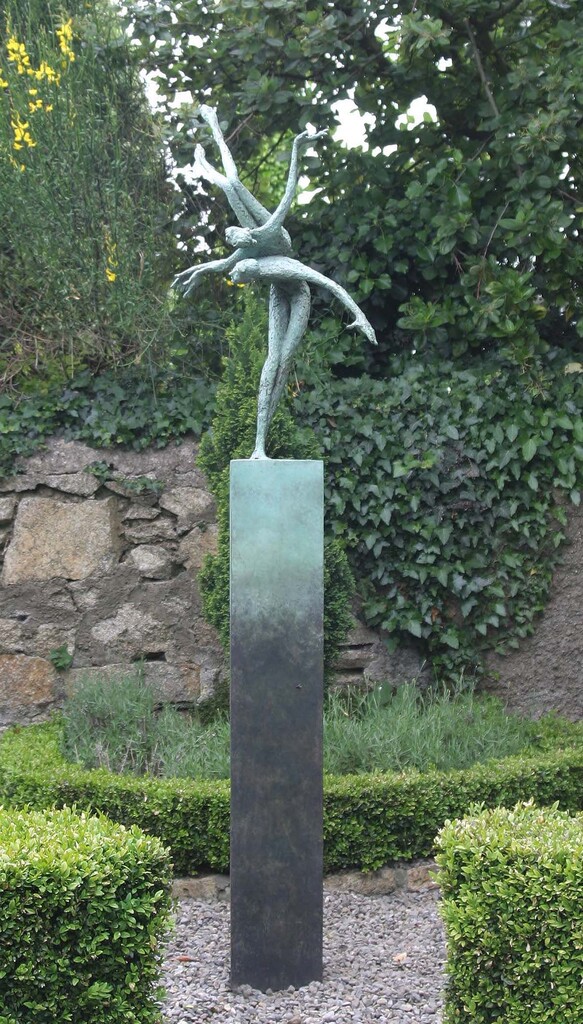
‘Tumbling,’ Bronze, 180x50x50cm, edition of 5
Do you always carry a sketch book with you, or take discrete photographs?
No, I admit I don’t. I bring it on holidays but it’s something I mainly use in the studio.
When I can I love going to life drawing classes. I only use the camera when I use a model in the studio, and that is when I have a firm idea of the pose.
How did Covid and Lockdowns effect your work?
You would think it would suit the artist in the studio, but it took away deadlines, and I live by deadlines. I like that expression “The professional does his/her best work when he doesn’t feel like it”.
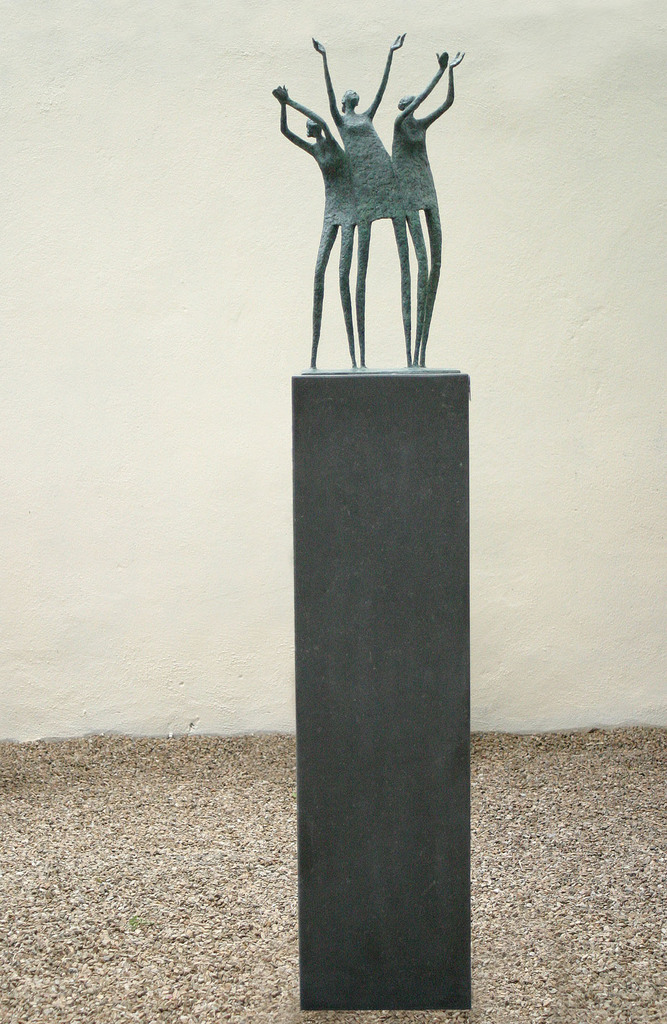
‘ Yeah, Yeah, Yeah’ Bronze, 60.5x34x16.5cm, Edition of 9
Comment on one purchase that either propelled your career or gave you, personal joy.
It must be building the studio for myself and having the wit to include a deck and fishpond. We have had the best dinner parties down at the studio and my morning commute…about a minute.
Contact:
Bob Quinn
Deborah Blakeley, Melbourne, Australia
Interview by Deborah Blakeley, March 2023
Think a colleague or friend could benefit from this interview?
Knowledge is one of the biggest assets in any business. So why not forward this on to your friends and colleagues so they too can start taking advantage of the insightful information the artist has given?
Other artists you may be interested in:



